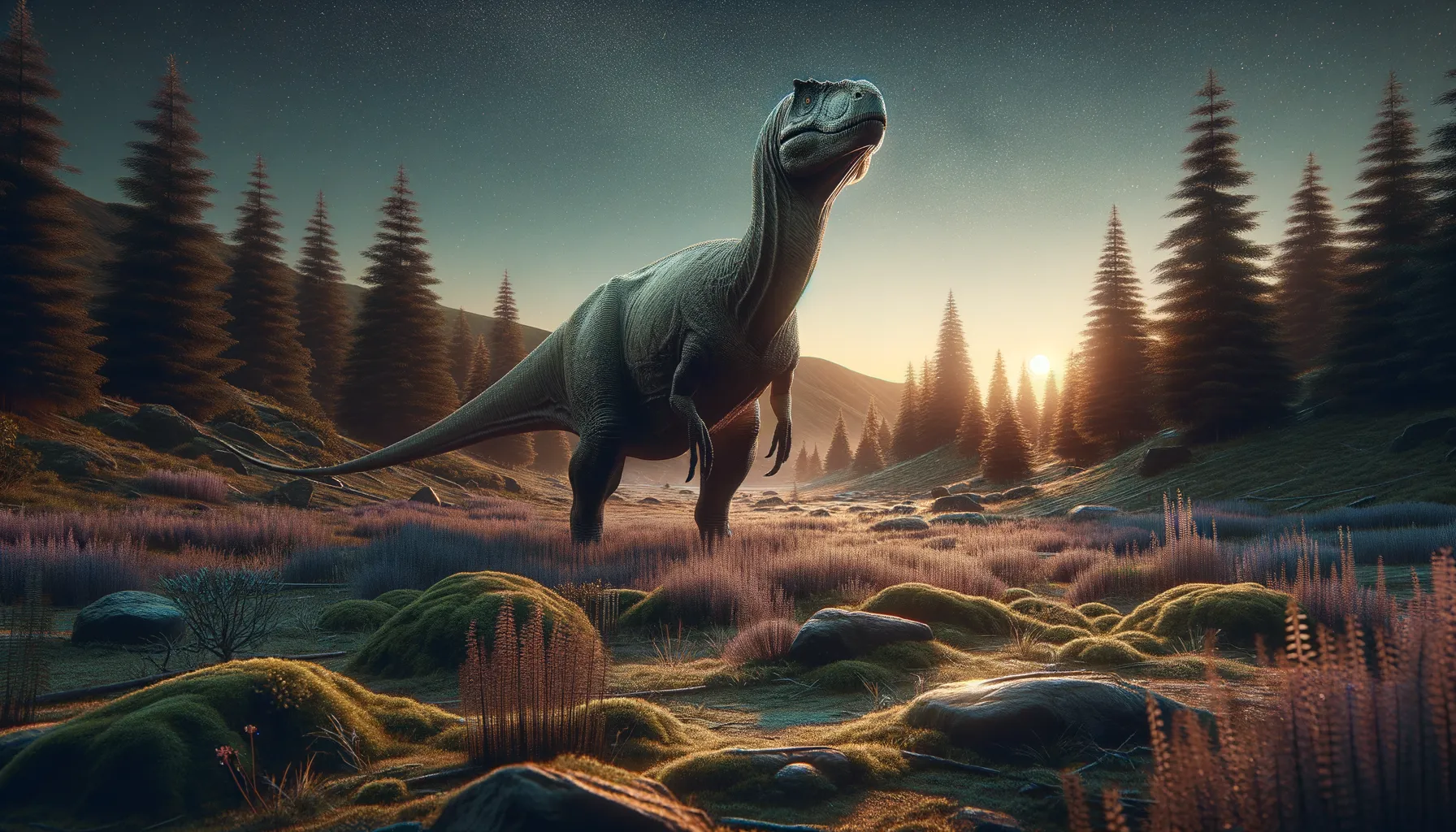
Avalonianus
Unearthing the mysteries of ancient giants.
Period
Jurassic
Length
Length estimates are not reliable based on current data.
Height
Potential height unclear due to limited fossil evidence.
Weight
Exact weight unknown; estimated from fragmentary remains.
Avalonianus is a mysterious dinosaur known predominantly from limited fossil fragments found in England. Little is known about its full skeletal structure, leading to challenges in understanding its complete anatomy and lifestyle. Paleontologists continue to study available remains to determine its relationships with other dinosaur species. It serves as a tantalizing hint of the diverse and complex ecosystems that existed during the Jurassic period in Europe.
Diet
Its diet remains speculative. As a dinosaur from the Jurassic period, it might have been herbivorous, benefiting from abundant plant life. However, concrete evidence is needed to confirm this aspect of its biology.
Hunting
Due to insufficient fossil data, Avalonianus' hunting or feeding behavior cannot be accurately determined. It might have had specific strategies adapted to its environment, which remain subjects of scientific debate.
Environmental challenges
During its time, Avalonianus would have faced challenges typical of the Jurassic period, including variable climate conditions and competition for resources. Geological changes could have influenced habitat shifts. Predatory dinosaurs might have posed a threat; however, more data is necessary to understand specific interactions.
Speed
Unknown due to incomplete fossil records.
Lifespan
Not well-understood, estimates are speculative.
First discovery
Identified from fossil fragments in the UK in the early 20th century.
Fun Facts
- Avalonianus is a dinosaur that got its name from the ancient Celtic land known as Avalon, which is now part of Great Britain.
- It lived during the early Jurassic period, around 200 million years ago, making it one of the earlier dinosaurs.
- Avalonianus is known mostly from teeth fragments, so much of its full appearance remains a mystery.
- These teeth suggest that Avalonianus was a herbivore, feeding on plants in prehistoric Britain.
- Being one of the lesser-known dinosaurs, Avalonianus still captures the imagination of paleontologists and enthusiasts alike.
- Despite its elusive nature, Avalonianus is important in understanding the diversity and evolution of early dinosaurs in Europe.
- Its discovery highlights how even fragmentary finds can contribute significant information to dinosaur research.
Growth and Development
The growth and development of Avalonianus remain largely speculative. If more complete specimens were discovered, they could provide insight into whether it followed growth patterns seen in relatable species. These patterns might have influenced its survival tactics and reproductive strategies.
Habitat
Avalonianus likely inhabited the lush and diverse landscapes common in the Jurassic period. Forests and plains rich in vegetation would have been optimal for sustenance. Its specific ecological niche is challenging to pinpoint without more complete fossil records.
Interaction with other species
Interactions with other species remain largely unknown. Avalonianus might have coexisted with a variety of plant and animal life, reflecting typical Jurassic ecosystems. Understanding these interactions better would require new and more comprehensive fossil finds.
Natural lifespan
Its natural lifespan is currently unknown, with estimates remaining conjectural.
Reproduction
Due to incomplete fossils, Avalonianus' reproductive behaviors are unknown. Like many dinosaurs, it might have laid eggs, but this requires confirmation from future discoveries. Reproduction details could be deduced from closely related species once Avalonianus' phylogenetic position is clearer.
Social behaviour
Social behavior is an enigma limited by available evidence. Avalonianus might have had social interactions typical of dinosaurs, potentially involving group dynamics if it was social. This area invites further investigation upon new fossil evidence.
Fossil locations
Fossils of Avalonianus have been primarily found in England. These fragmentary findings limit detailed understanding, but they provide tantalizing clues to its existence. Continued exploration of these sites might yield more informative discoveries in the future.
